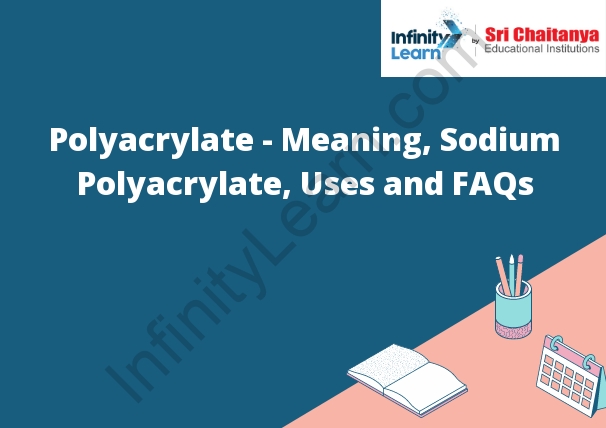Table of Contents
What is Polyacrylate? ; Sodium Polyacrylate Uses
Polyacrylate is a water-based polymer that is often used as a thickener or stabilizer in various products. It is also known as acrylic acid polymer or sodium polyacrylate. Sodium polyacrylate is a white, odorless, and tasteless powder that is soluble in water. It is used in a variety of applications, including food, cosmetics, and pharmaceuticals. Polyacrylate – Meaning Sodium Polyacrylate Uses and FAQs.

Polyacrylate Polymer
A polyacrylate polymer is a synthetic polymer made from the acrylic acid monomer. It is a white, water-soluble powder that is used as a binder and adhesive in many industrial and consumer products.
Sodium Polyacrylate
Sodium polyacrylate is a water-soluble polymer that is used in a variety of applications, including as a superabsorbent in disposable diapers and sanitary napkins, and as a thickener, stabilizer, and emulsifier in food and cosmetic products. When wet, sodium polyacrylate can absorb up to 500 times its weight in water, making it an effective means of absorbing liquid and controlling moisture.
1. Sequestering Agents
Sequestering agents are chemicals that bind to and remove pollutants from water. Sequestering agents can be used to remove pollutants such as heavy metals, oils, and pesticides from water. Sequestering agents work by binding to the pollutants and removing them from the water.
2. Thickening Agents
Thickening agents are used in foods to increase their viscosity. This is done in order to make them more palatable, as well as to improve their texture. There are a variety of different thickening agents that can be used, including starches, gums, and proteins. Each one has its own unique properties, which means that they can be used in different types of foods.
3. Emulsifiers
Emulsifiers are used in foods to help them stay together. This is especially important in products that contain both oil and water, as they would otherwise separate. Emulsifiers work by binding the two substances together, which prevents them from separating. This is important because it ensures that the food will have a consistent texture and flavor.
4. Preservatives
Preservatives are used in foods to help them stay fresh for longer. This is important because it prevents the food from going bad and becoming dangerous to eat. There are a variety of different preservatives that can be used, each of which has its own unique properties.
3. Coatings
3.1. Introduction
3.2. Types of coatings
3.3. How coatings work
3.4. Adhesion and cohesion
3.5. The role of surfactants in coatings
3.6. The rheology of coatings
3.7. The application of coatings
3.8. The properties of coatings
3.8.1. Mechanical properties
3.8.2. Thermal properties
3.8.3. Electrical properties
3.8.4. Optical properties
3.8.5. Chemical properties
3.8.6. Biological properties
3.9. The durability of coatings
3.10. The environmental impact of coatings
4. Agriculture
5. Manufacturing
6. Mining
7. Utilities
8. Construction
9. Trade, transportation, and utilities
10. Information
11. Financial activities
12. Professional and business services
13. Education and health services
14. Leisure and hospitality
15. Other services
16. Government
5. Drug Delivery Applications
5.1. Drug Delivery
5.1.1. Controlled Release Drug Delivery
5.1.2. Targeted Drug Delivery
5.1.3. Local Drug Delivery
5.1.4. Systemic Drug Delivery
5.1.5. Oral Drug Delivery
5.1.6. Parenteral Drug Delivery
5.1.7. Topical Drug Delivery
5.2. Vaccine Delivery
5.3. Gene Therapy Delivery
6. Removal of Metal Ions from the Environment
Treatment of Metal Ions in Wastewater
Polyacrylate – Meaning Sodium Polyacrylate Uses and FAQs.









